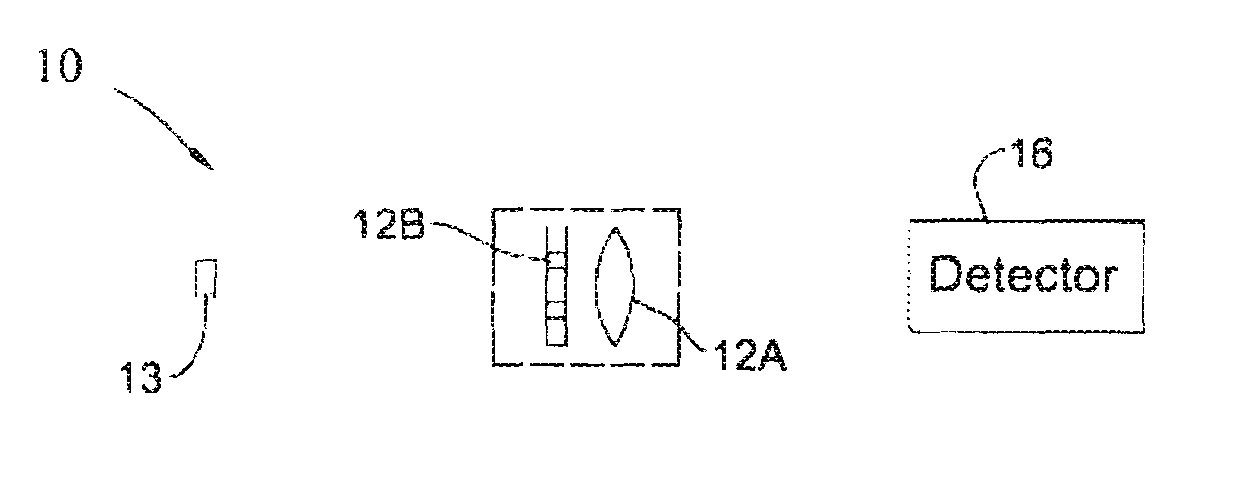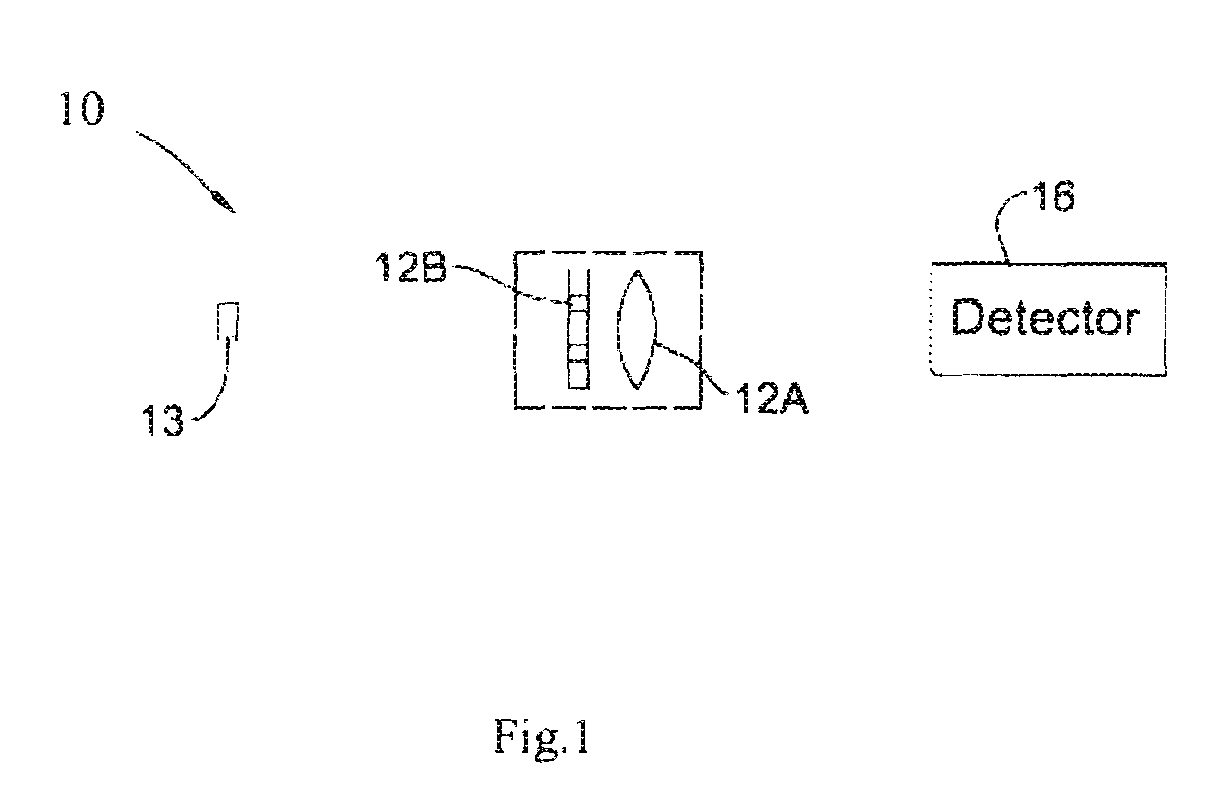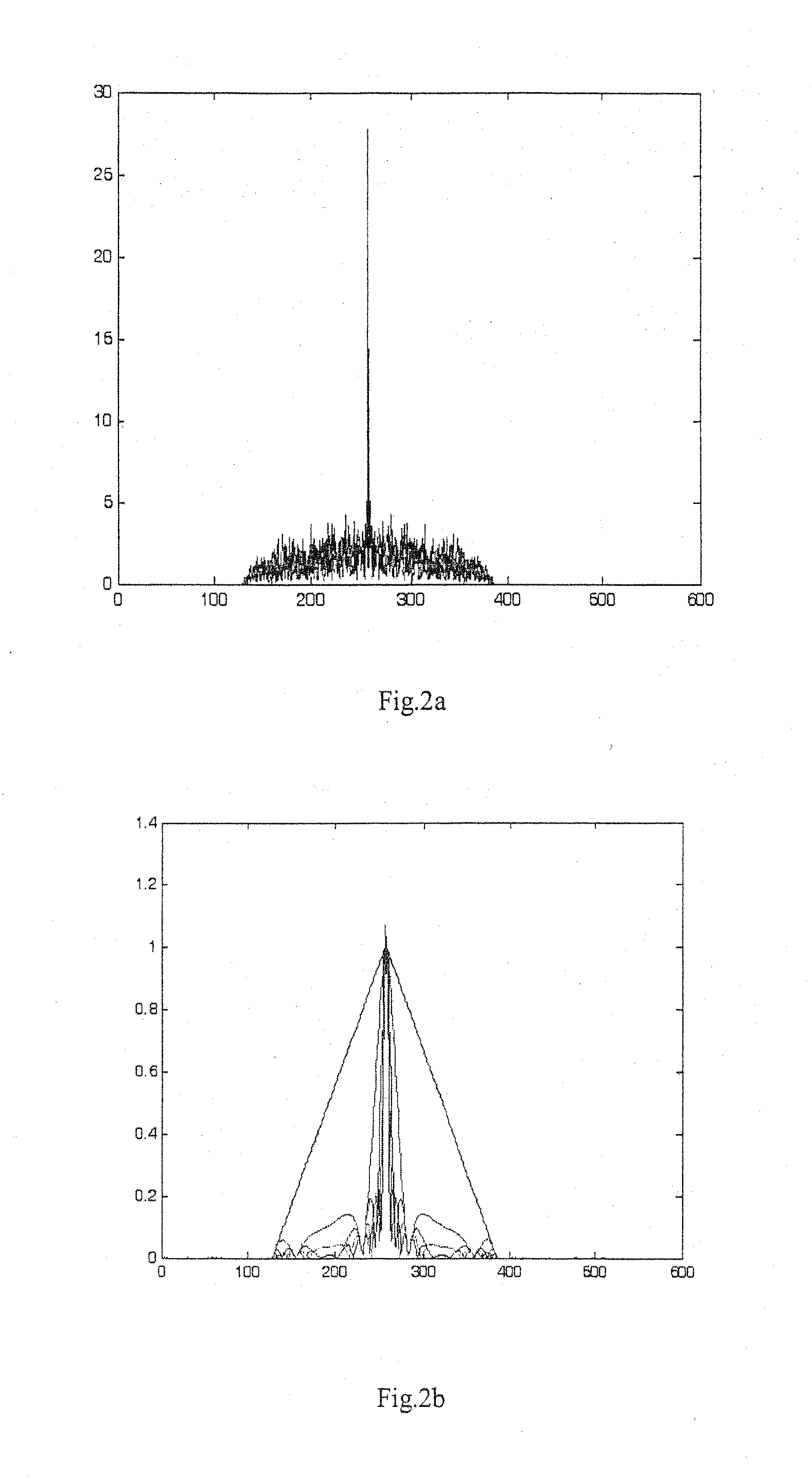Imaging system and method for providing extended depth of focus, range extraction and super resolved imaging
a technology of extended depth of focus and range extraction, applied in the field of imaging techniques, can solve the problems of limited resolution power or minimum separation between two points, and achieve the effect of reducing the number of points to achieve resolution
- Summary
- Abstract
- Description
- Claims
- Application Information
AI Technical Summary
Benefits of technology
Problems solved by technology
Method used
Image
Examples
Embodiment Construction
[0059]Reference is made to FIG. 1, schematically illustrating an example of an imaging system 10 configured and operable according to the invention. The imaging system 10 is associated with an object 13 to be imaged, and includes an imaging lens arrangement 12, and a light detector unit 16 associated with a control unit 18. The lens arrangement 12 includes a tensing element 12A and an optical element of random-phase aperture coding 12B. The imaging lens arrangement 12 (lensing element and random-phase aperture coding element) and the light detector unit 16 are preferably optically aligned and stationary mounted. The optical element 12B is configured as a random-phase aperture having phase-affecting pattern of transition regions. Preferably, as shown in the present example, the mask 12B is a separate element attached to the imaging lens or located close to the entrance / exit pupil thereof. Alternatively, the mask 12B may be implemented integral with the lens, namely as a pattern on th...
PUM
 Login to View More
Login to View More Abstract
Description
Claims
Application Information
 Login to View More
Login to View More - R&D
- Intellectual Property
- Life Sciences
- Materials
- Tech Scout
- Unparalleled Data Quality
- Higher Quality Content
- 60% Fewer Hallucinations
Browse by: Latest US Patents, China's latest patents, Technical Efficacy Thesaurus, Application Domain, Technology Topic, Popular Technical Reports.
© 2025 PatSnap. All rights reserved.Legal|Privacy policy|Modern Slavery Act Transparency Statement|Sitemap|About US| Contact US: help@patsnap.com



